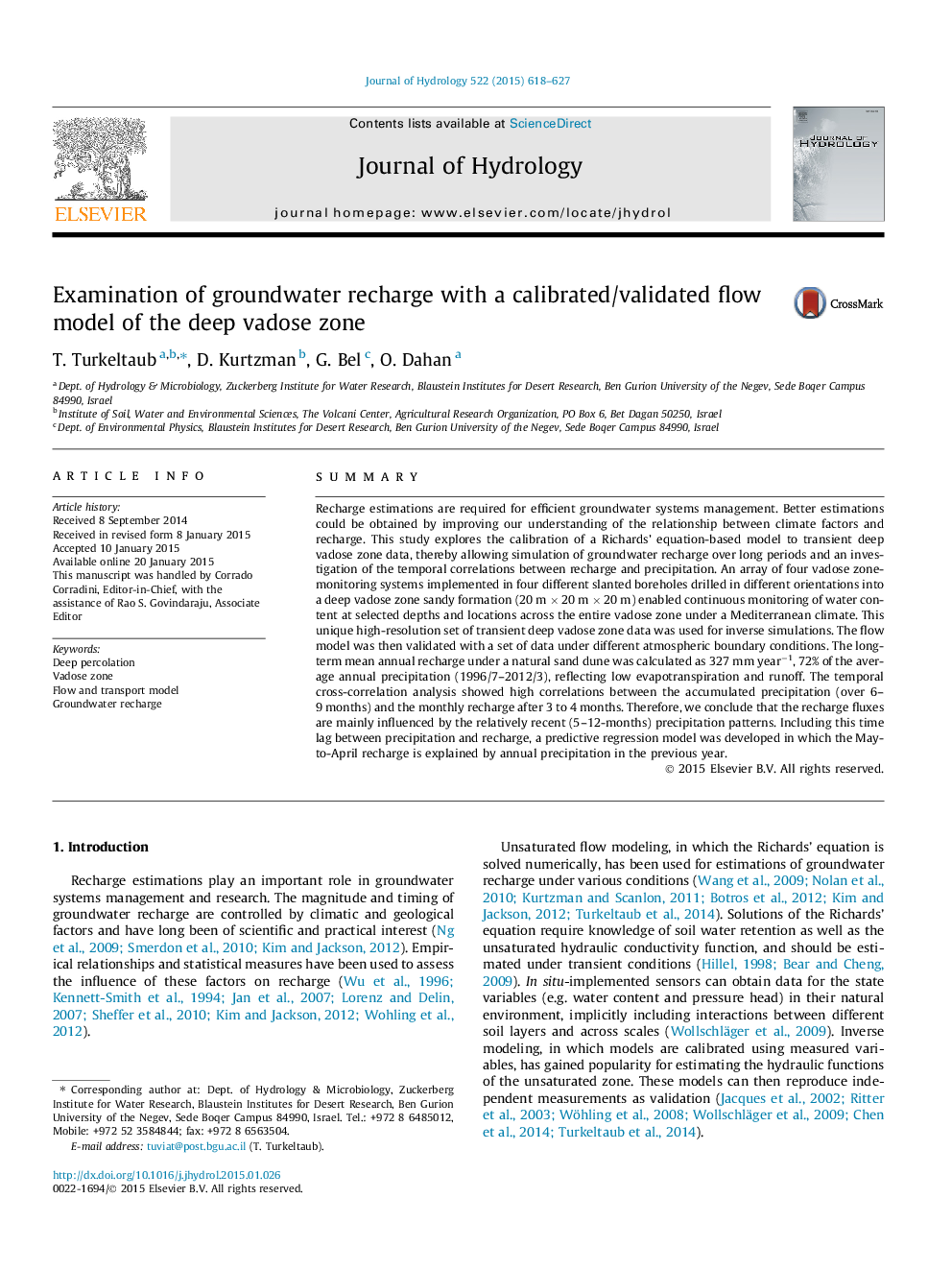| کد مقاله | کد نشریه | سال انتشار | مقاله انگلیسی | نسخه تمام متن |
|---|---|---|---|---|
| 6411370 | 1629928 | 2015 | 10 صفحه PDF | دانلود رایگان |
- Calibration of an unsaturated flow model to transient deep vadose zone data.
- Application of vadose zone model for long-term estimation of groundwater recharge.
- Assessment of the temporal relation between precipitation and groundwater recharge.
- A simple precipitation-recharge regression model with time lag.
SummaryRecharge estimations are required for efficient groundwater systems management. Better estimations could be obtained by improving our understanding of the relationship between climate factors and recharge. This study explores the calibration of a Richards' equation-based model to transient deep vadose zone data, thereby allowing simulation of groundwater recharge over long periods and an investigation of the temporal correlations between recharge and precipitation. An array of four vadose zone-monitoring systems implemented in four different slanted boreholes drilled in different orientations into a deep vadose zone sandy formation (20 m Ã 20 m Ã 20 m) enabled continuous monitoring of water content at selected depths and locations across the entire vadose zone under a Mediterranean climate. This unique high-resolution set of transient deep vadose zone data was used for inverse simulations. The flow model was then validated with a set of data under different atmospheric boundary conditions. The long-term mean annual recharge under a natural sand dune was calculated as 327 mm yearâ1, 72% of the average annual precipitation (1996/7-2012/3), reflecting low evapotranspiration and runoff. The temporal cross-correlation analysis showed high correlations between the accumulated precipitation (over 6-9 months) and the monthly recharge after 3 to 4 months. Therefore, we conclude that the recharge fluxes are mainly influenced by the relatively recent (5-12-months) precipitation patterns. Including this time lag between precipitation and recharge, a predictive regression model was developed in which the May-to-April recharge is explained by annual precipitation in the previous year.
Journal: Journal of Hydrology - Volume 522, March 2015, Pages 618-627
